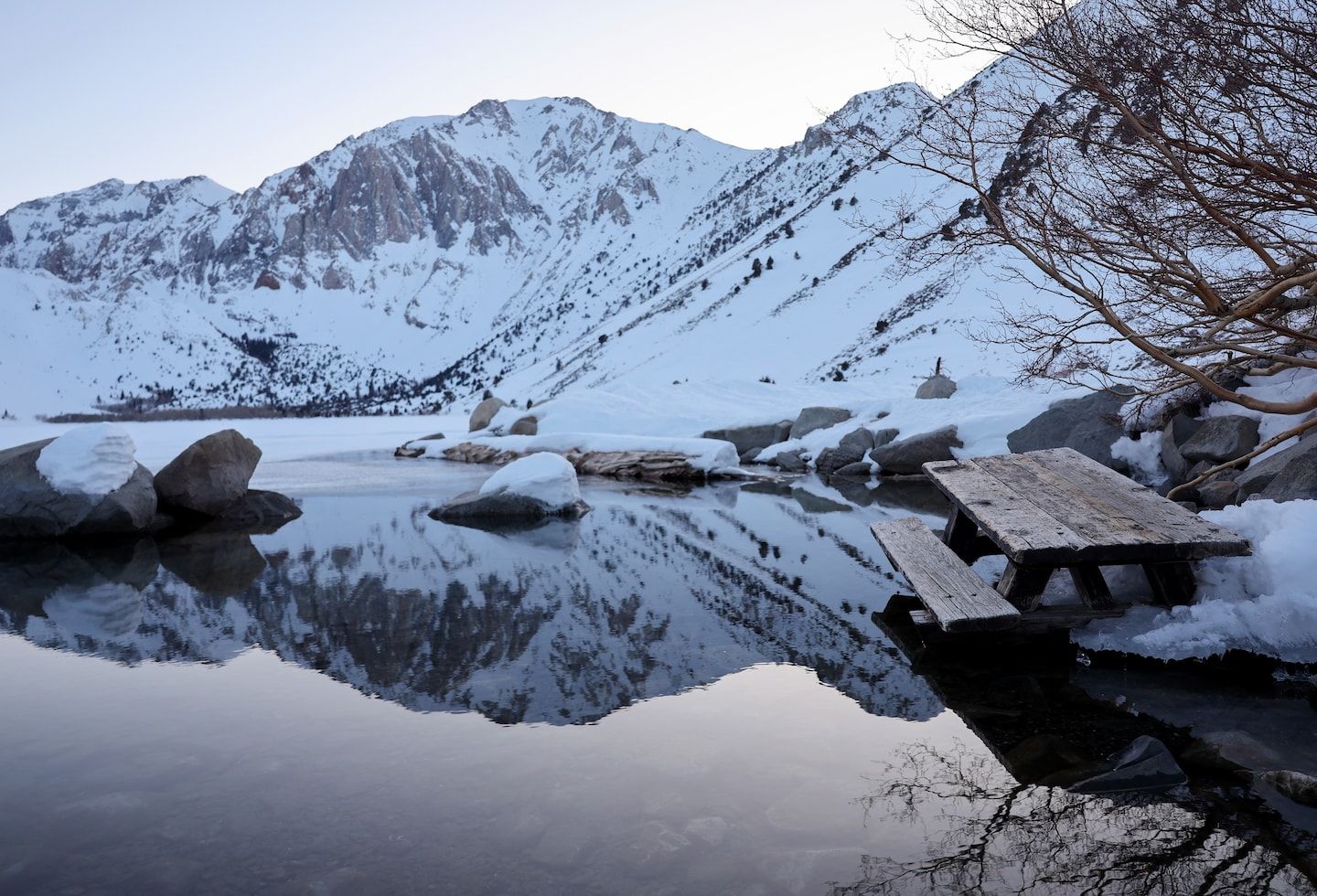California's snowpack may melt rapidly this week as temperatures soar
Listen 5 min Comment on this story Comment Gift Article Share
A heat wave descending on the western United States this week is set to dramatically ramp up the melting of California’s historic snowpack. The rapid melt could send waters rushing into streams and exacerbate ongoing flooding in the San Joaquin Valley west of the Southern Sierra. Wp Get the full experience. Choose your plan ArrowRight “This upcoming week is looking prime for accelerating snowmelt Sierra Nevada-wide with continued warming — especially warm, above freezing nights — and plenty of sunshine,” Benjamin Hatchett, an assistant professor of atmospheric science at the Desert Research Institute in Reno, Nev., said in an email. “This will elevate stream flows on both sides of the Sierra Nevada with flooding likely.”
The Central Valley could top 95 degrees by the end of the week and challenge records for both maximum and minimum temperatures. But the unusual spring warmth won’t be felt just in the valleys.
Advertisement
“The temperatures really matter up where the snow is — those are also going to be anomalously warm,” said Alan Haynes, a hydrologist at the California Nevada River Forecast Center.
At 8,000 feet in the Southern Sierra, daytime highs will be in the 50s with nighttime lows above freezing.
“The thing that really gets the snow melting in earnest is the warm nighttime temperatures — that’s when you can get a lot of flow,” Haynes said.
In April 2021, sunny heat waves led to record snowmelt rates in several Western states. This year, melting could happen even faster in the many high-elevation areas recently burned by wildfires, including the 2020 Creek Fire and the 2021 Caldor, Dixie and KNP Complex fires in the Sierra. Burned landscapes can absorb more sunlight, heating up more due to darkened snow and missing tree canopies.
Flood risk escalates this week
Flood watches have been posted from Wednesday through early next week for parts of the Sierra, including Yosemite National Park, and for western Nevada.
Advertisement
“Creeks and streams will be running fast, potentially out of banks in some locations, and will be extremely cold,” the National Weather Service in Reno wrote in a forecast discussion.
On Friday night, the Merced River at the Pohono Bridge in Yosemite National Park is forecast to exceed its flood stage of 10 feet.
“If you get up to 12.5 feet, that really impacts the park,” Haynes said. Because Yosemite is a flat valley surrounded by higher terrain, floodwaters tend to spread out easily, inundating key roads and infrastructure within the valley.
In January 1997, rainstorms raised the river to 23.5 feet, he said, causing $178 million in flood damage in the park.
Daniel Swain, a climate scientist at the University of California at Los Angeles, said in an online presentation Monday that while most of the snowmelt will flow down the west side of the Sierra, there will be significant flows on the eastern side as well, bringing flood risks to areas like the Owens Valley. The Los Angeles Aqueduct, which carries water from the Sierra Nevada to metropolitan Southern California, runs through this region and was damaged during flooding earlier this winter.
Advertisement
The Carson and Walker rivers in western Nevada could also approach or exceed flood stage by this weekend.
Rapid melt brings ‘complicated water management dilemma’
Rivers that drain west into Tulare Lake, a dry lake bed that has begun to reemerge with floodwaters from this year’s storms, will be flowing at far above their normal levels.
“These high flows … are going to pump water into the southern San Joaquin Valley and the Tulare Lake basin in particular at a very rapid rate in the coming days,” Swain said.
To avoid overtopped reservoirs or uncontrolled spills this spring and summer, operators must release water to make room for snowmelt. Over the weekend, a flood warning was issued for the Kings River and remains in effect due to releases from the Pine Flat Dam.
“All of those releases from reservoirs add up by the time you get downstream,” Haynes said. “It’s a complicated water management dilemma this year.”
Advertisement
Given how much snow is still to melt — the Southern Sierra snowpack is 322 percent of average for the date — officials are expecting weeks with high-volume flows on rivers and streams.
Flood risk would likely peak in late May and early June, then begin to taper off after that, Haynes said, with the melt continuing into August.
State officials said in a briefing Monday that they are working to divert water, including to groundwater basins, to relieve stress on rivers and protect downstream communities.
However, Deirdre Des Jardins, an independent researcher and director of California Water Research, said that officials are avoiding the crucial decisions of where to route flood flows if the waters do rush in. The difficult choices — between protecting communities or protecting corporate farmland in the Tulare region, for example — would likely be made quickly at the local level.
“The flood fight team probably has ideas about where to cut levees and has had discussions but pulling the trigger will most likely be a contingency decision made under emergency conditions,” she said in an email.
GiftOutline Gift Article
Source: The Washington Post


